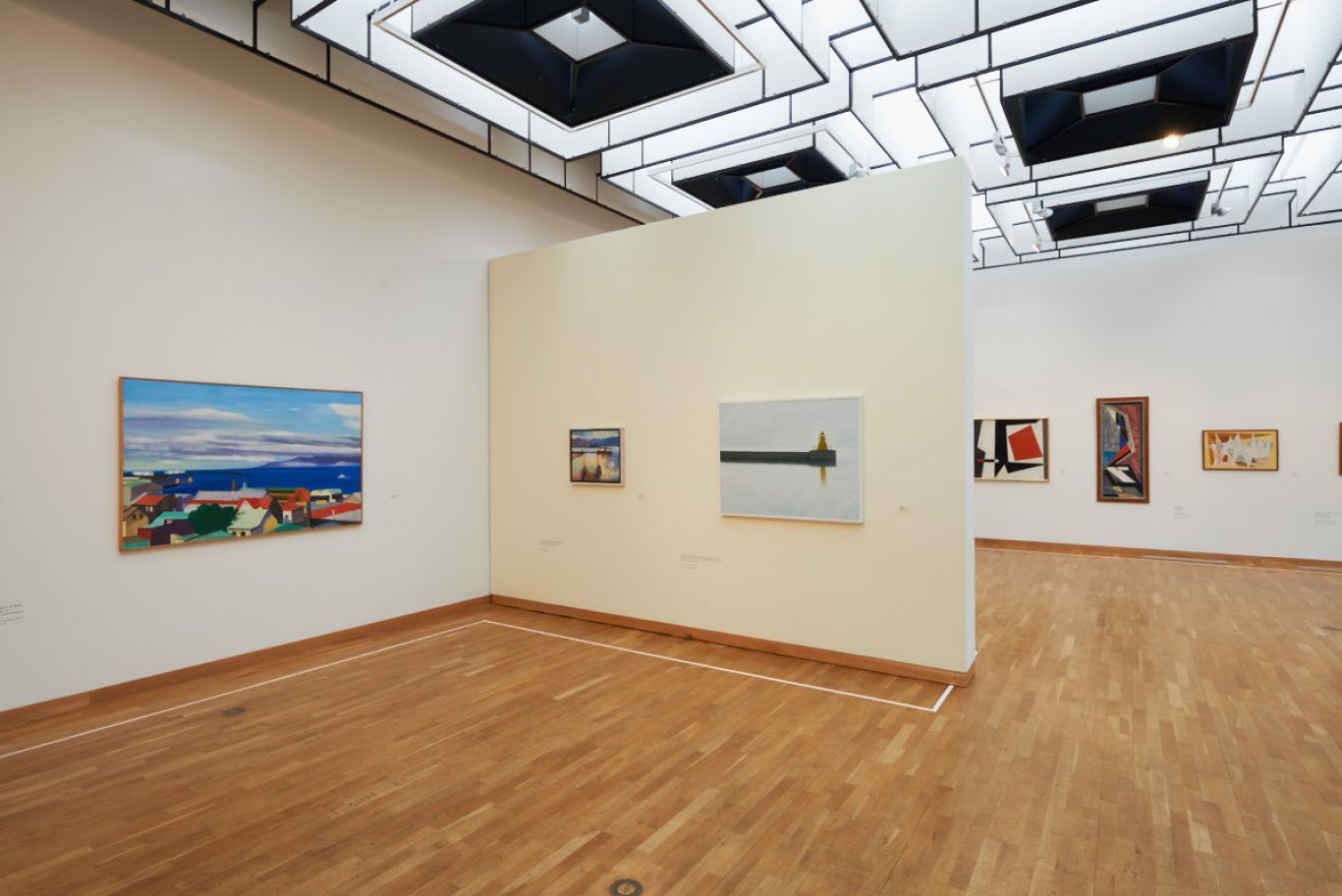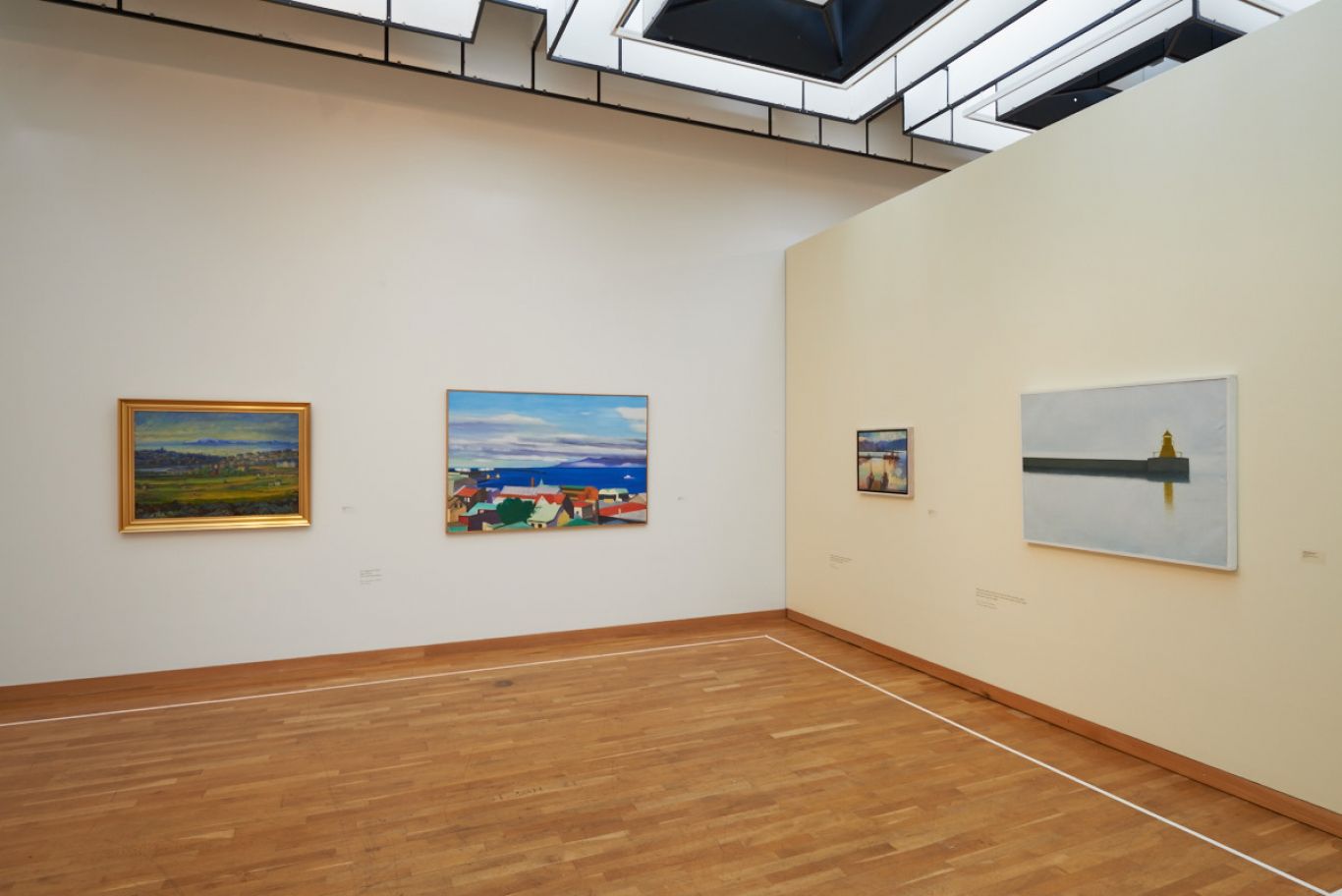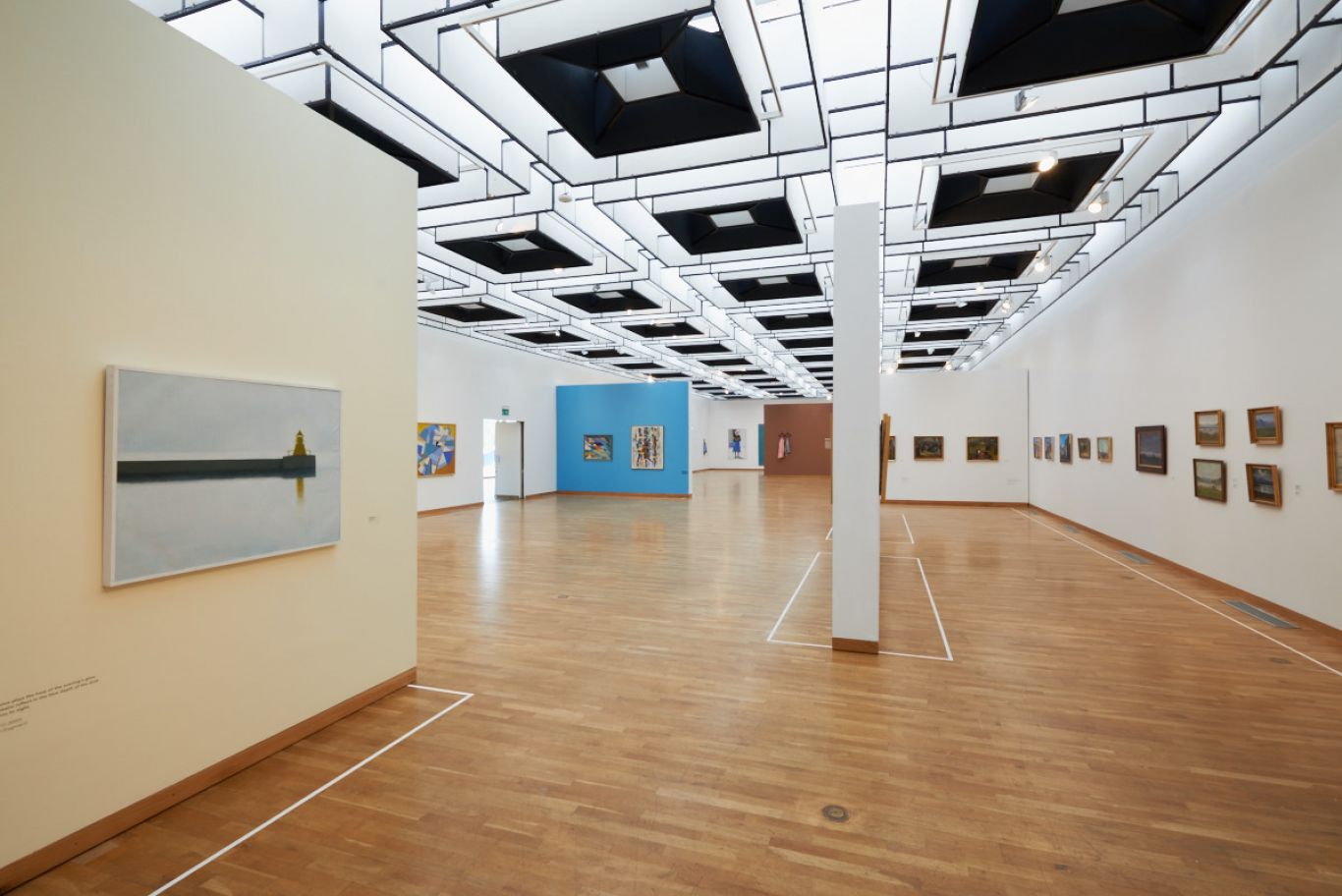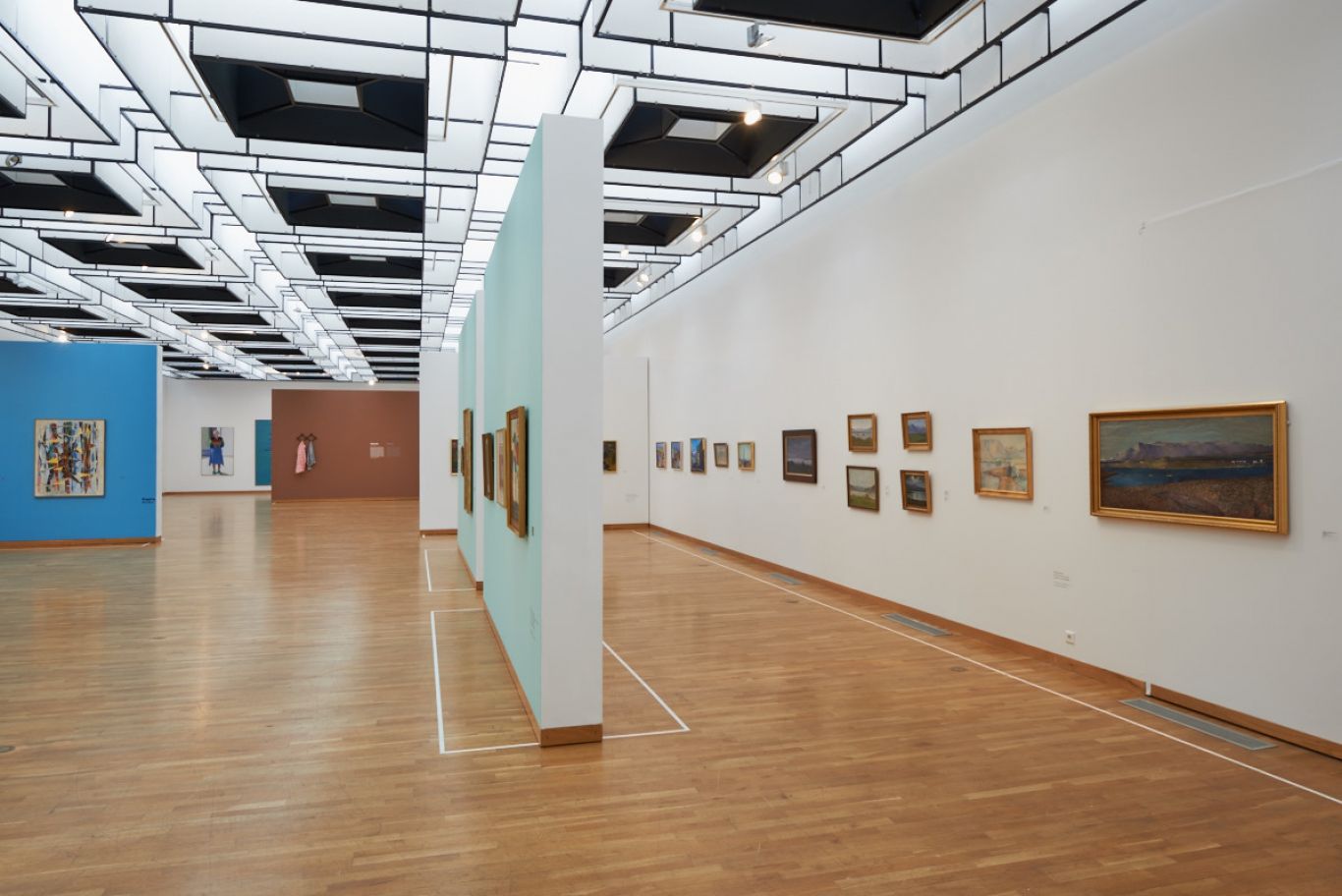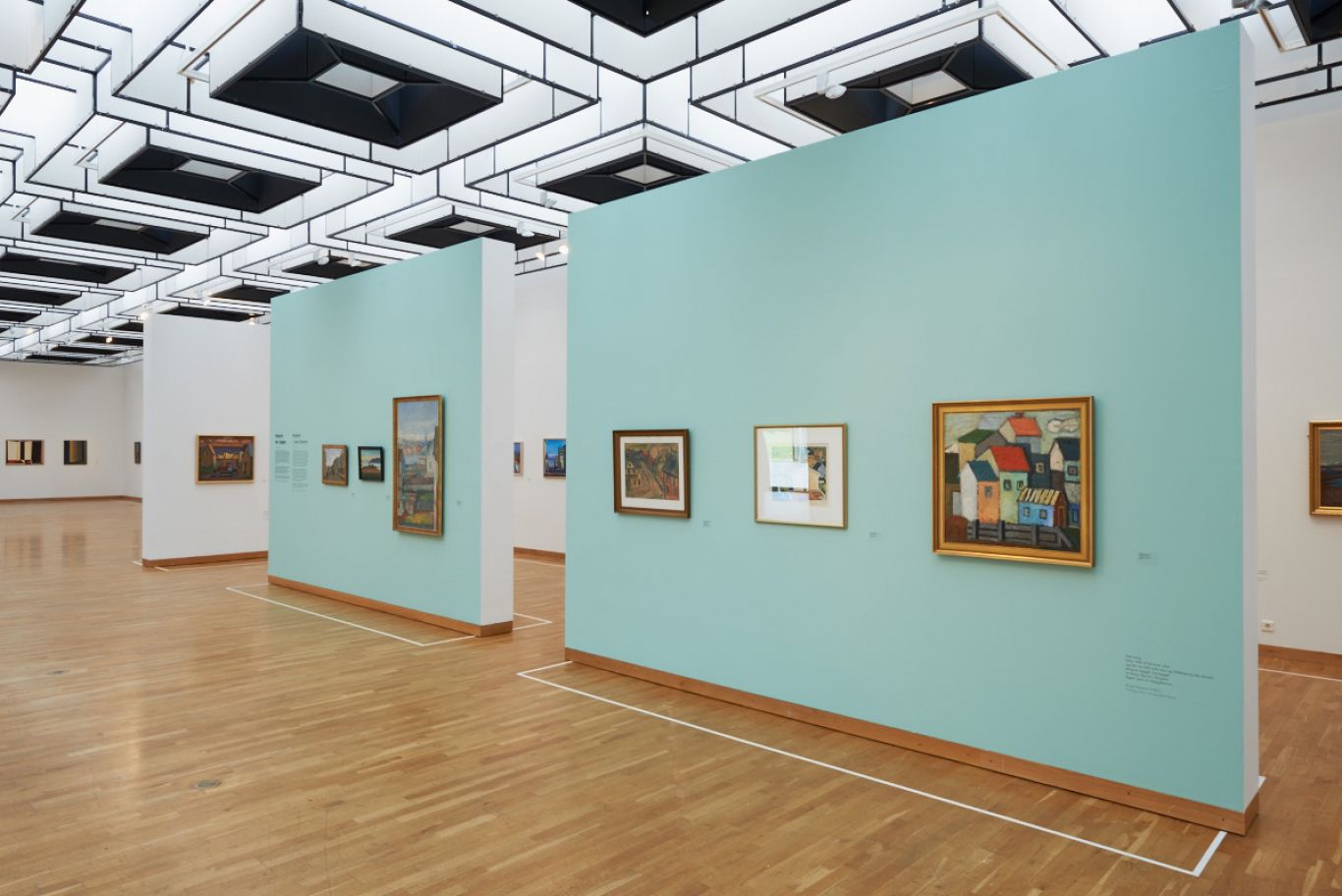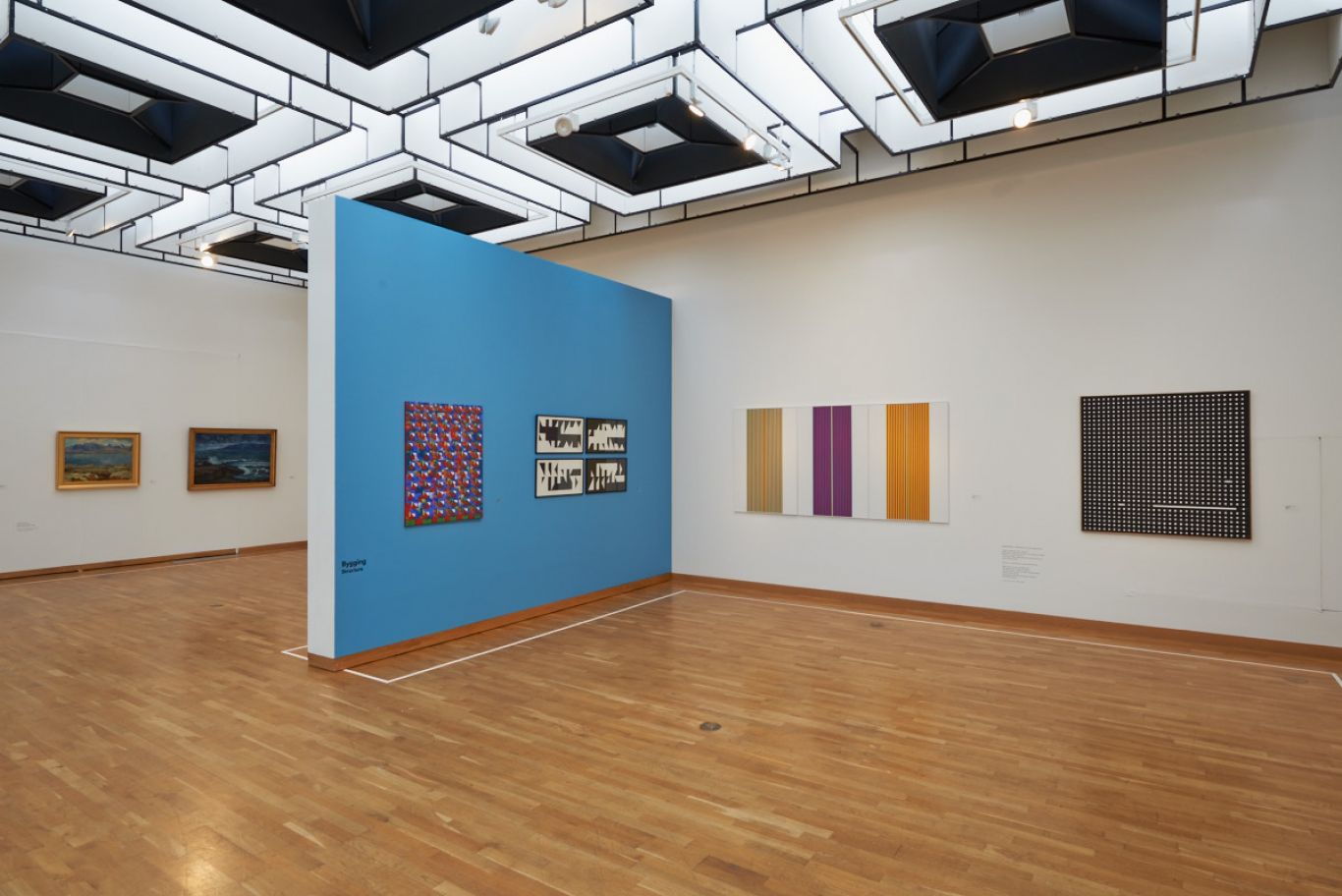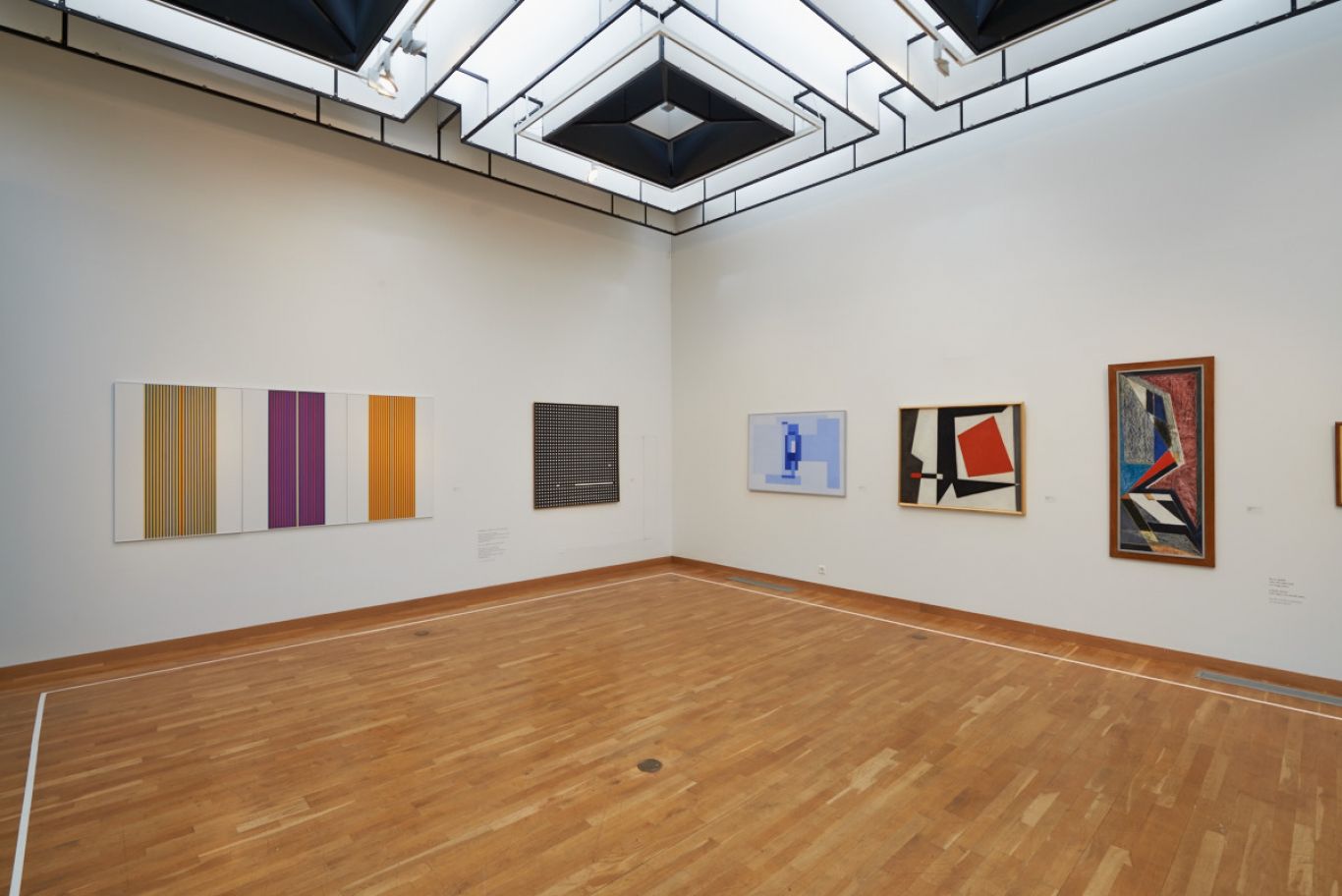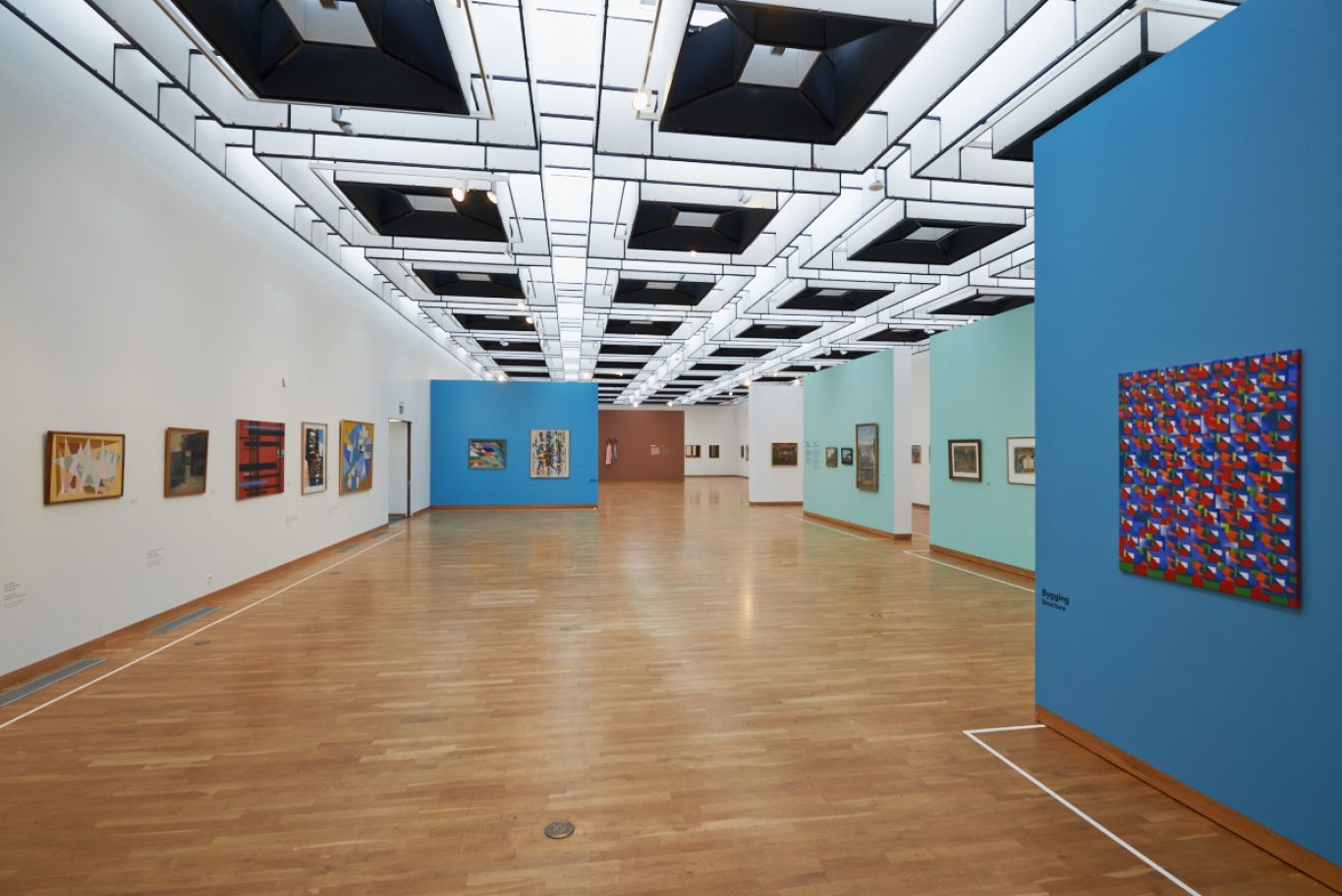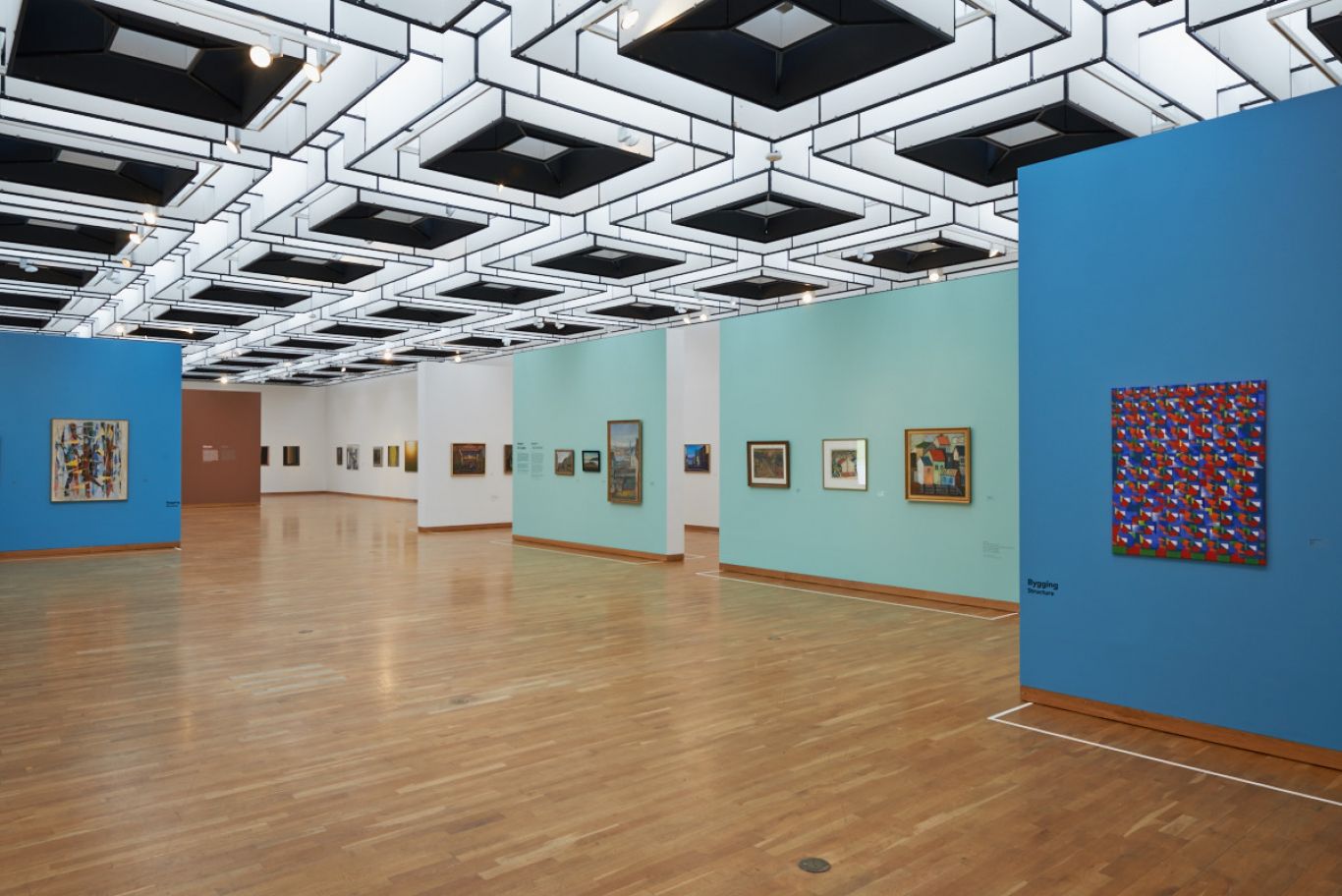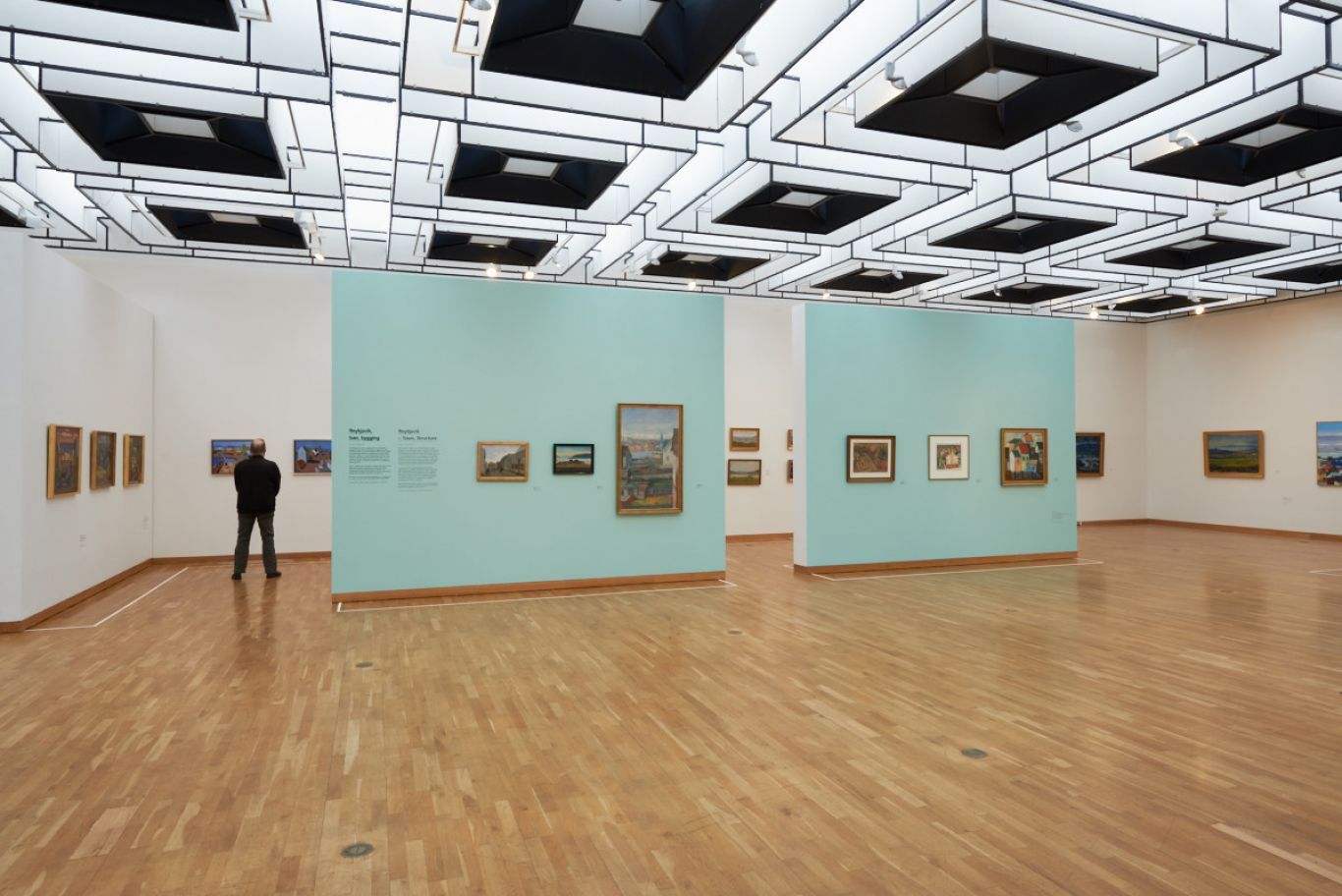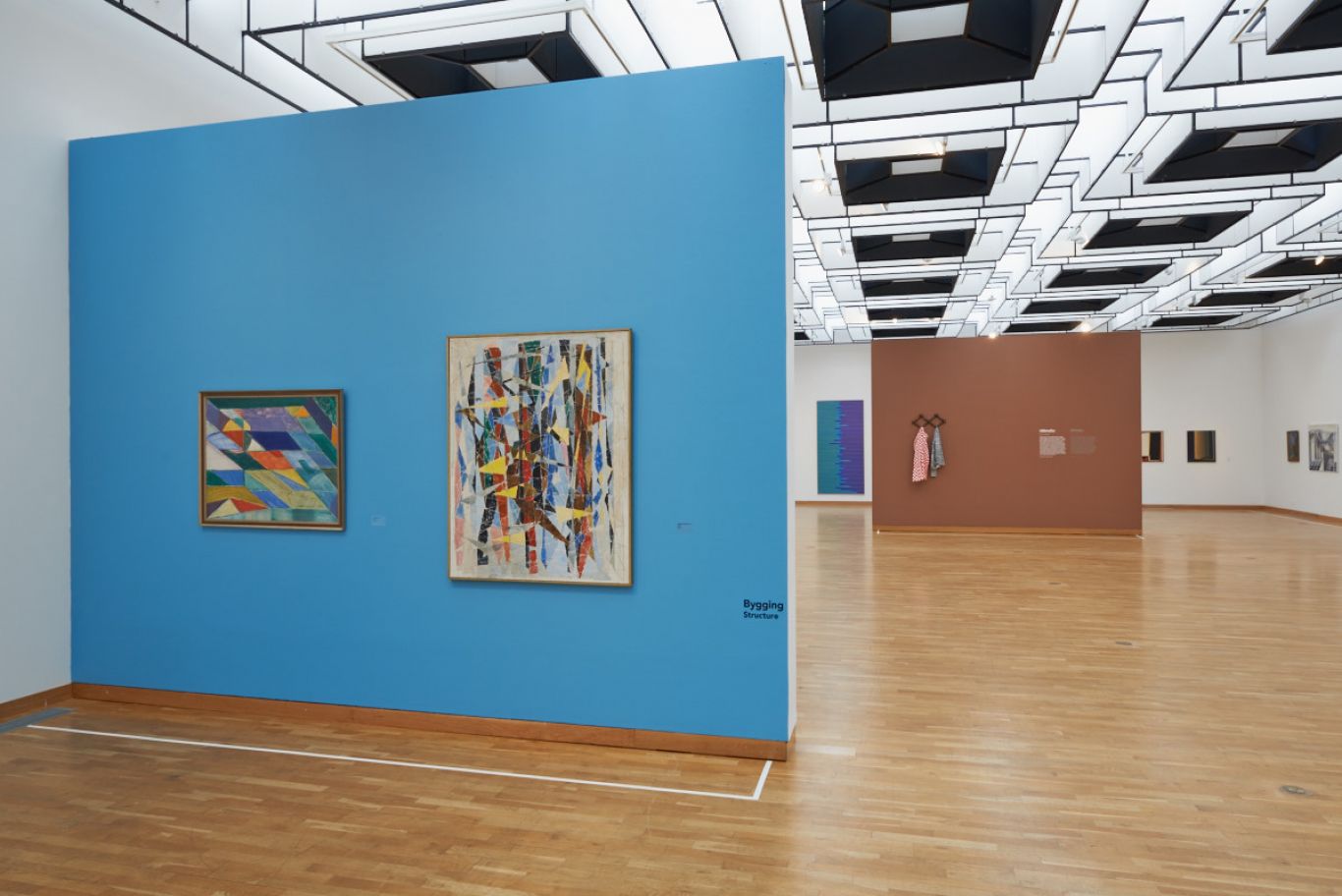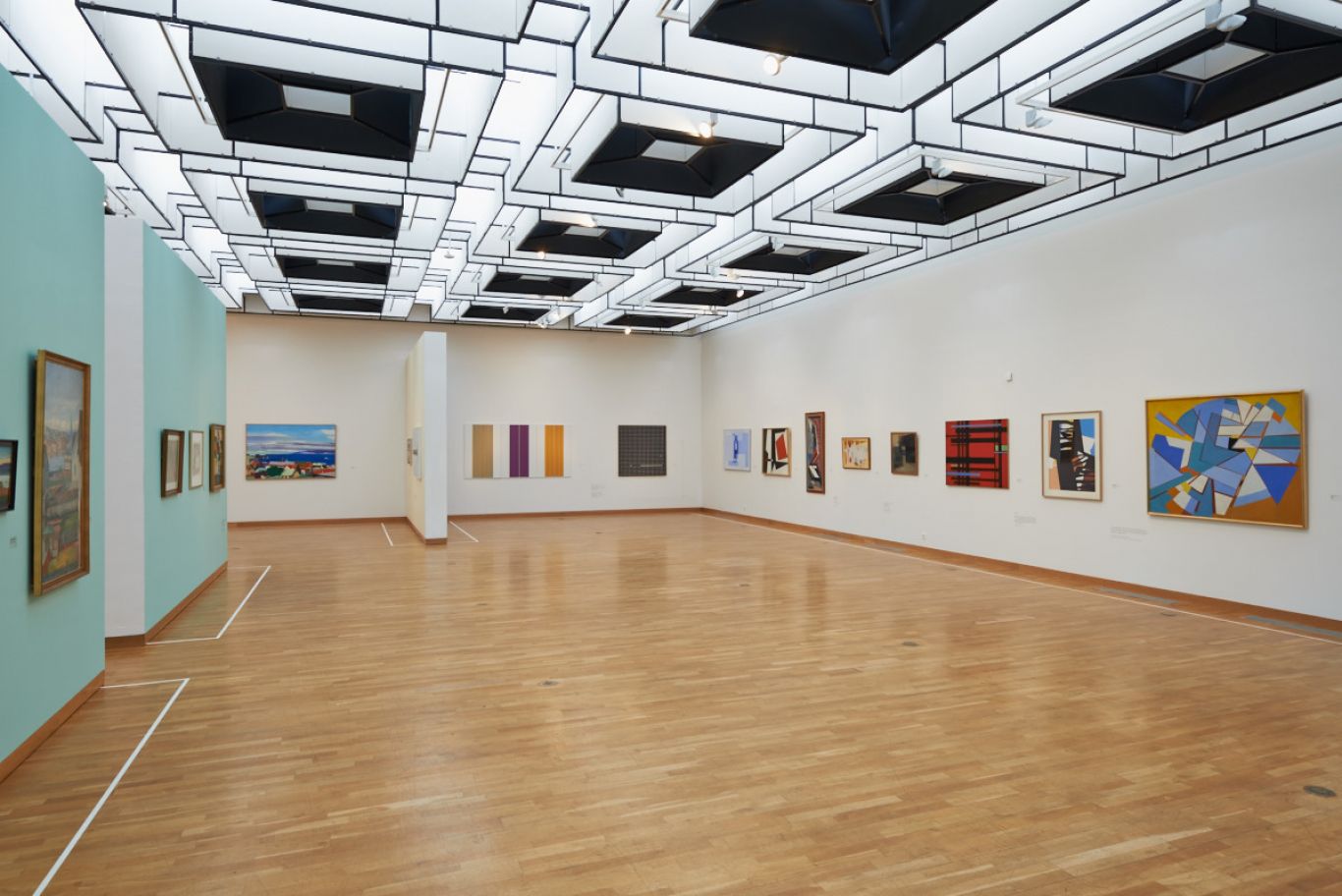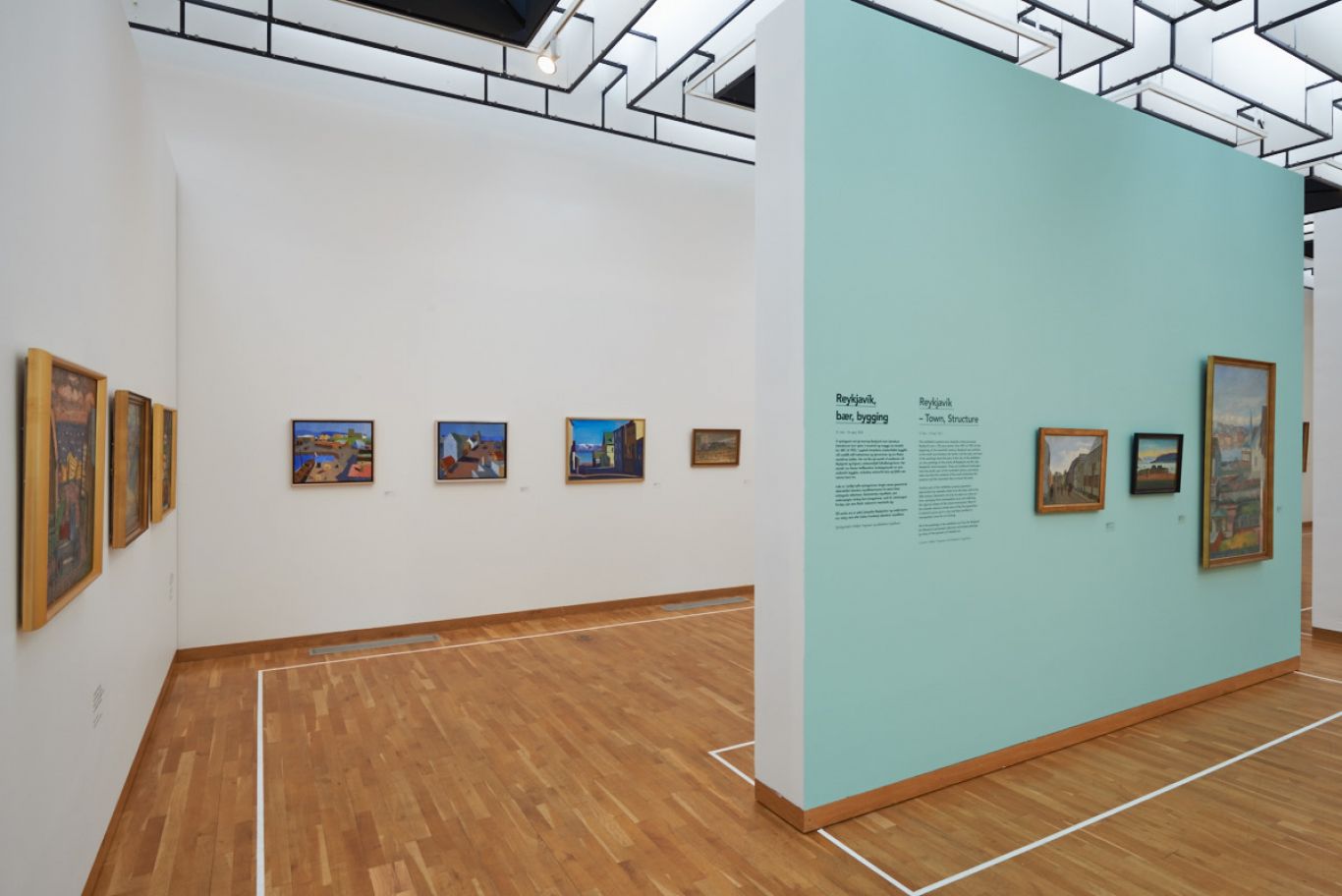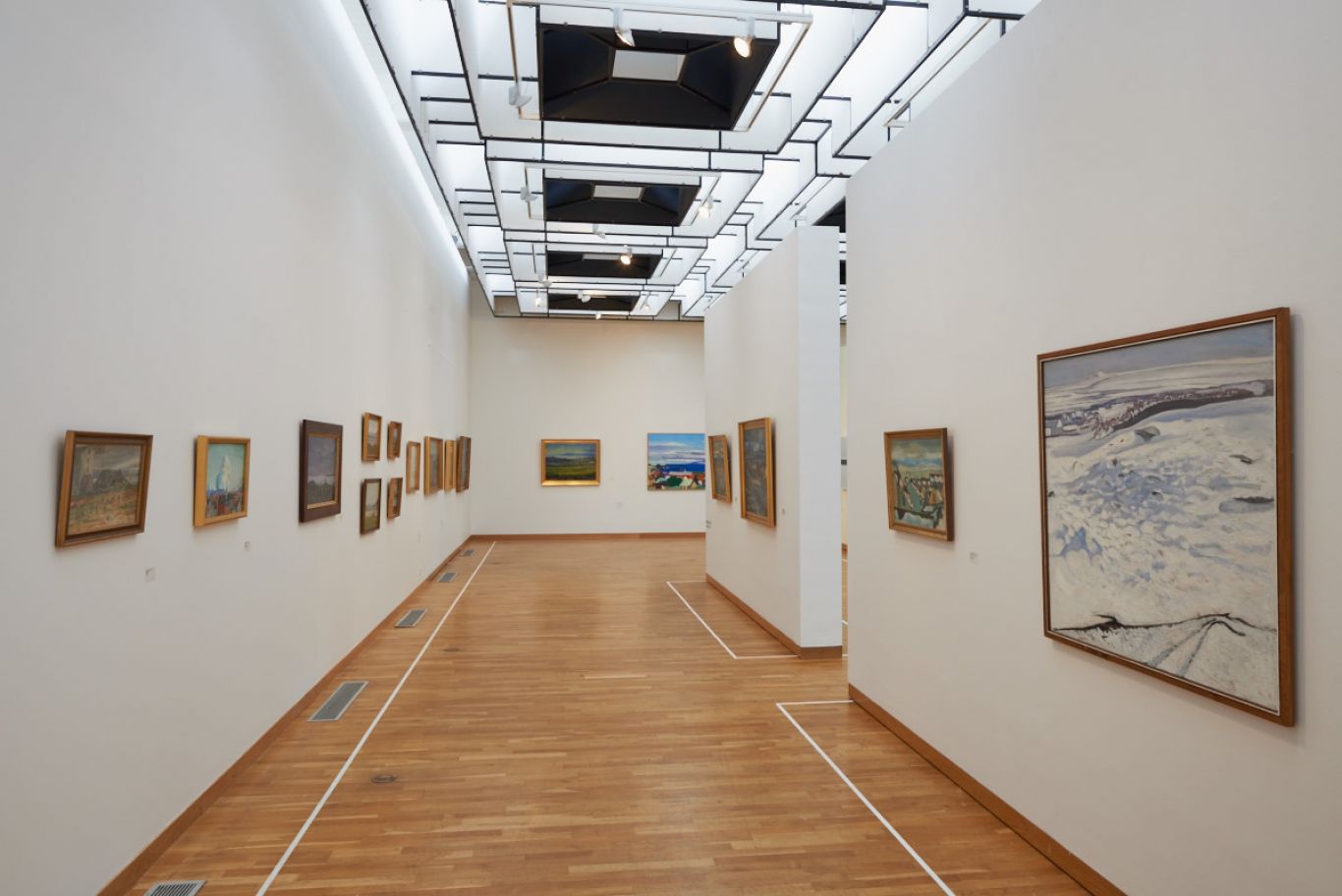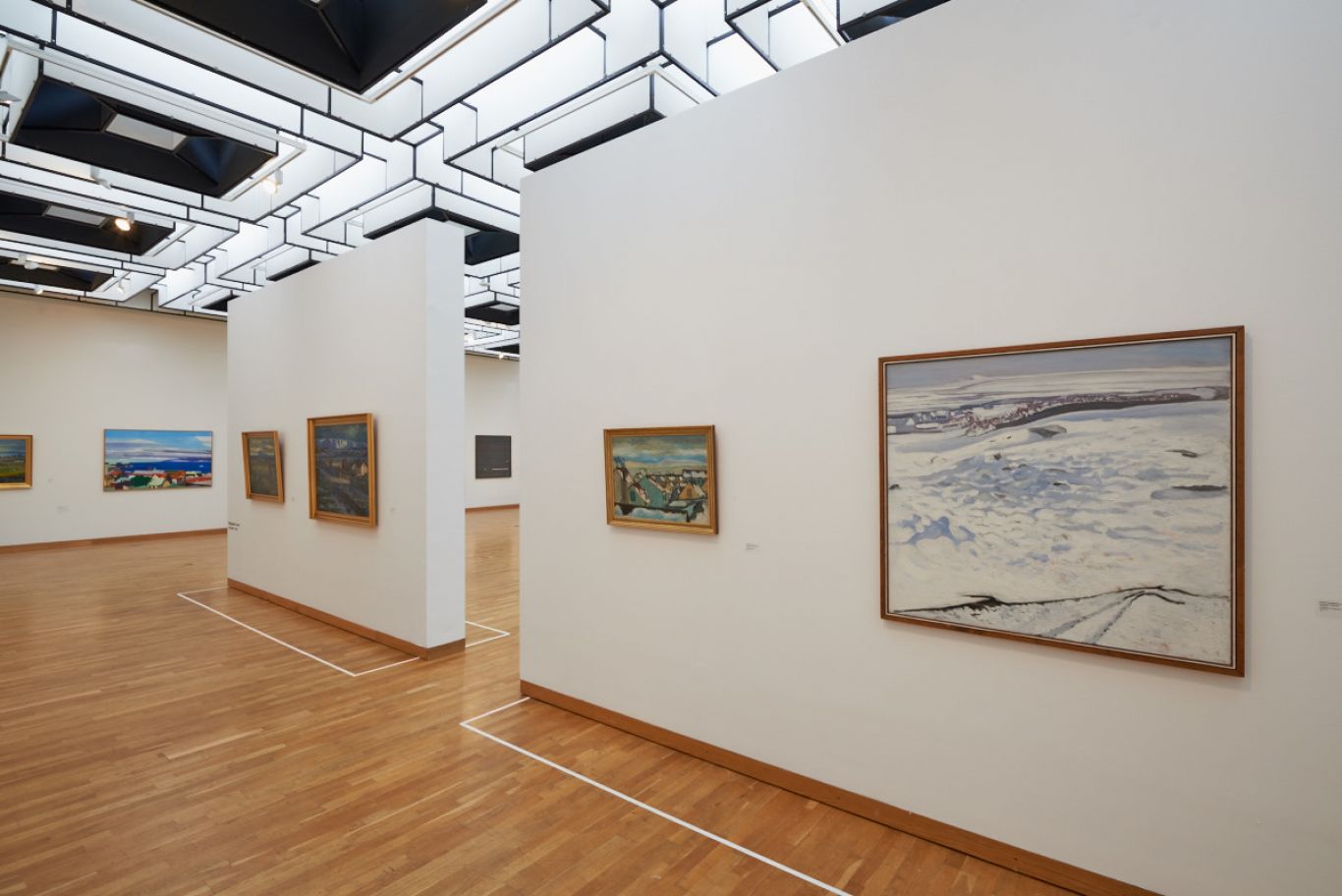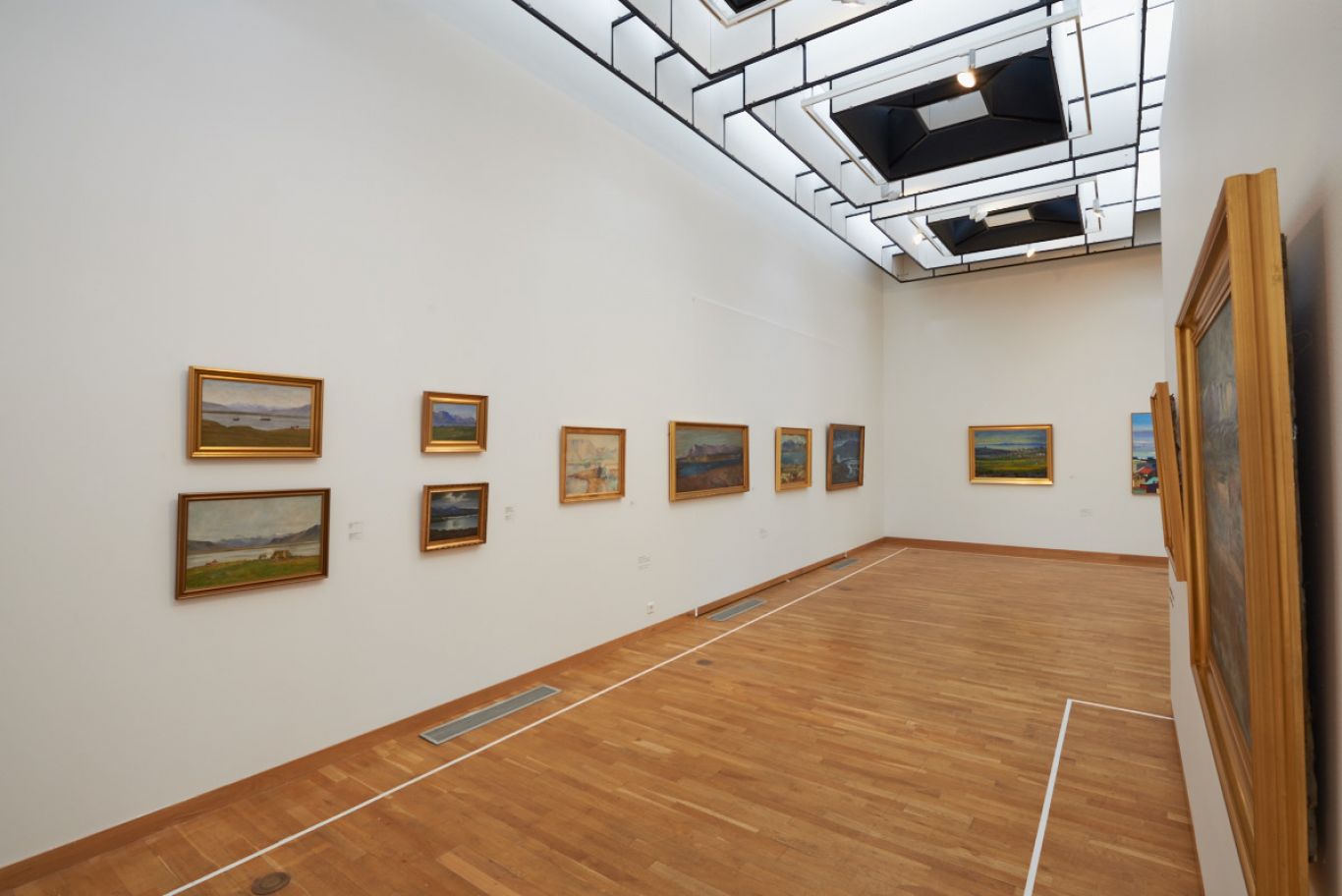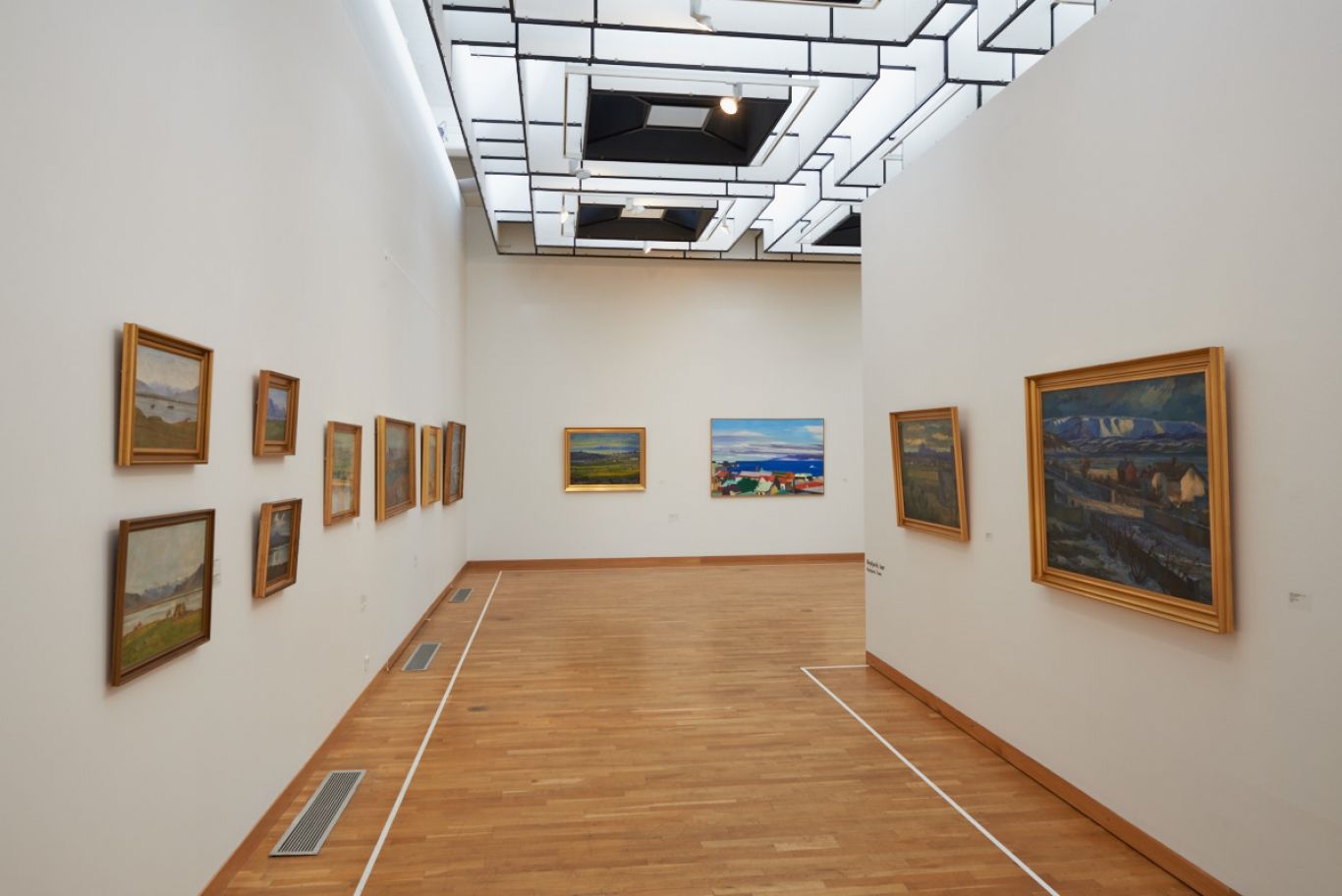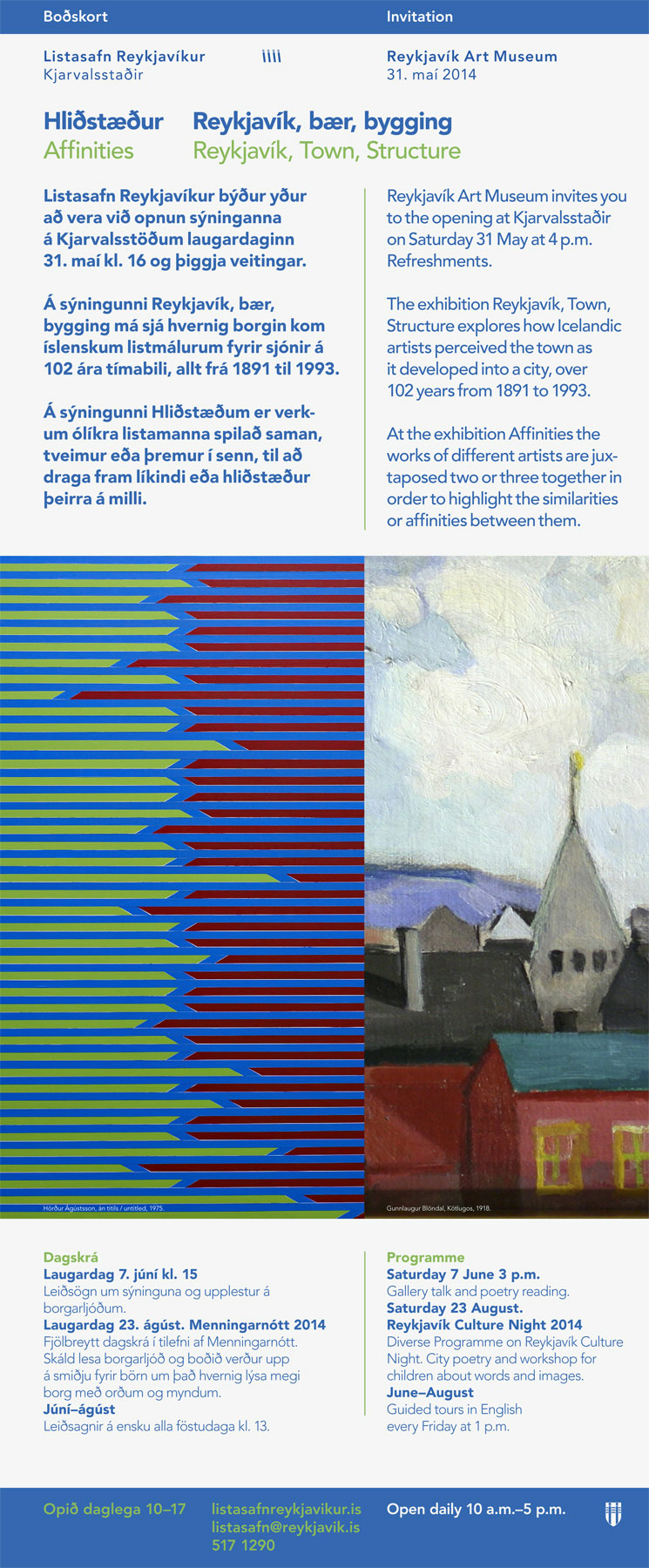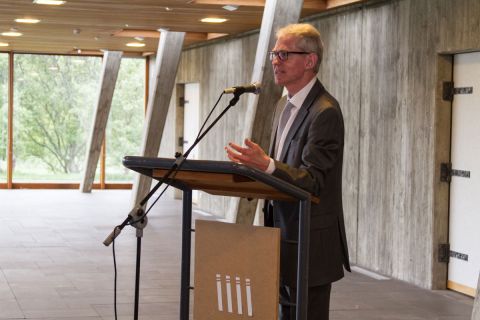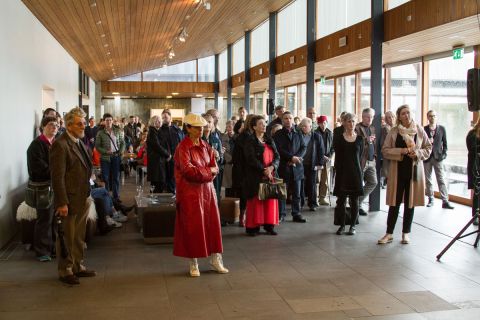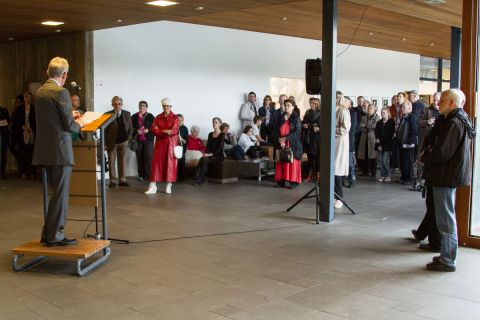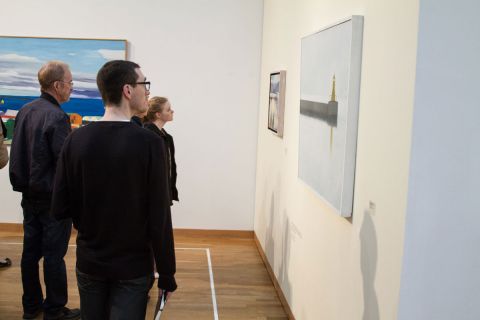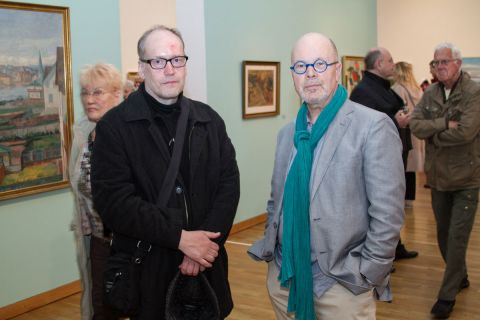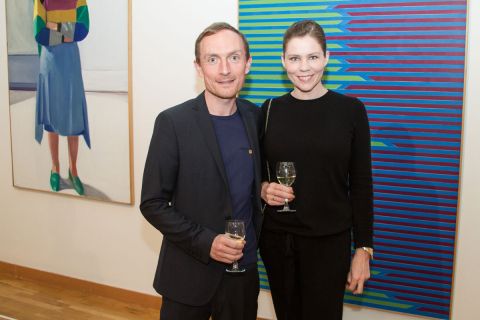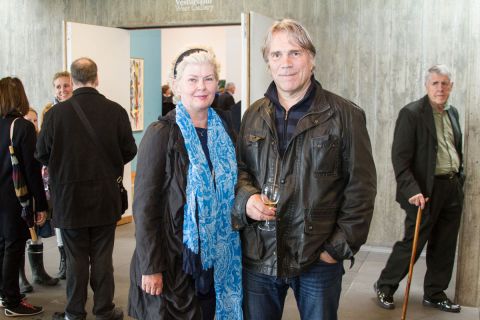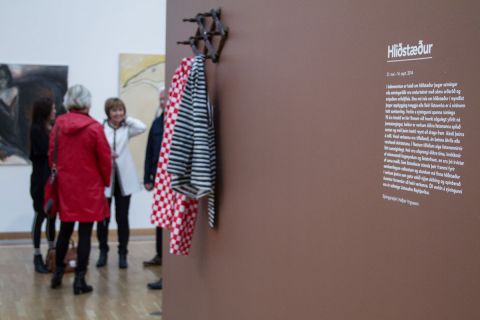Choose year
Reykjavík, Town, Structure
This exhibition explores how Icelandic artists perceived Reykjavík over a 102 year period, from 1891 to 1993. At the beginning of the twentieth century, Reykjavík was confined to the small area between the harbor and the Lake, and most of the paintings show this part of the city. In the exhibition are also paintings of the straits off Reykjavík and Mt. Esja, Reykjavík’s local mountain. These are traditional landscapes from the earlier part of the twentieth century, portraying what was then the outskirts of the small community—the seashore and the mountains that surround the town.
Another part of the exhibition presents geometric abstractions by Icelandic artists from the latter half of the 20th century. Geometric art is by its nature an urban art form, springing from metropolitan areas and reflecting the rigorous shapes of the urban environment. Most of the Icelandic abstract artists were of the first generation in Iceland to grow up in a city, and they travelled to cosmopolitan areas for art training.
All of the paintings in the exhibition are from the Reykjavík Art Museum’s permanent collection and include paintings by many of the pioneers of Icelandic art.
Reykjavík UNESCO City of Literature has chosen Reykjavík Poems by 10 poets from the period 1931-2013 to decorate the exhibition. This is the first collaborative project between Reykjavík Art Museum and Reykjavík UNESCO City of Literature in this field.
While Reykjavík was not large around the turn of the 20th century – hardly more than a village in international terms, without electricity, mains water or drains – it is interesting to observe how often artists choose a perspective that gives an impression of dense urban development. The themes reflect progressive projects, such as a coal-crane at the harbour, the new gasworks, and the first factories. In 1900 the population of Reykjavík was about 6,000; ten years later it had doubled. During that decade 620 new homes were built. Due to mass migration from rural areas in the early 20th century, the town’s population reached 28,000 by 1930, and in 1993 it exceeded 100,000. Today the population of Reykjavík numbers 119,764 (total population of the capital area is 205, 675).
The 1930s mark a turning-point in Icelandic art with the emergence of a new generation of artists such as Snorri Arinbjarnar, Jón Engilberts and Nína Tryggvadóttir. Inspired by the social and political spirit of the age, they took a social-realist view of the developing city: this is a period of powerful images from the docks, and scenes from the lives of ordinary people in Reykjavík.
Geometric art is by its nature an urban form, springing from European cities and reflecting the rigorous shapes of the city in its horizontal and vertical structure. Most of the Icelandic abstract artists were of the first generation in Iceland to grow up in an urban environment, and they had travelled to cosmopolitan cities for art training. The rounded, organic forms of nature are conspicuous by their absence. This geometric art engages in a dialogue with the big coal-crane in a painting by Karl Kvaran; it is reflected in the stylised roofs of Svavar Guðnason’s Arkitektúr/Archtecture; and in the works of Guðmunda Andrésdóttir it is manifested in the railings and scaffolding of urban expansion.

Click on the pictures to view some more on Instagram and post your own by using the #hashtag of the exhibition.
Remember to follow Reykjavík Art Museum on @reykjavikartmuseum.
